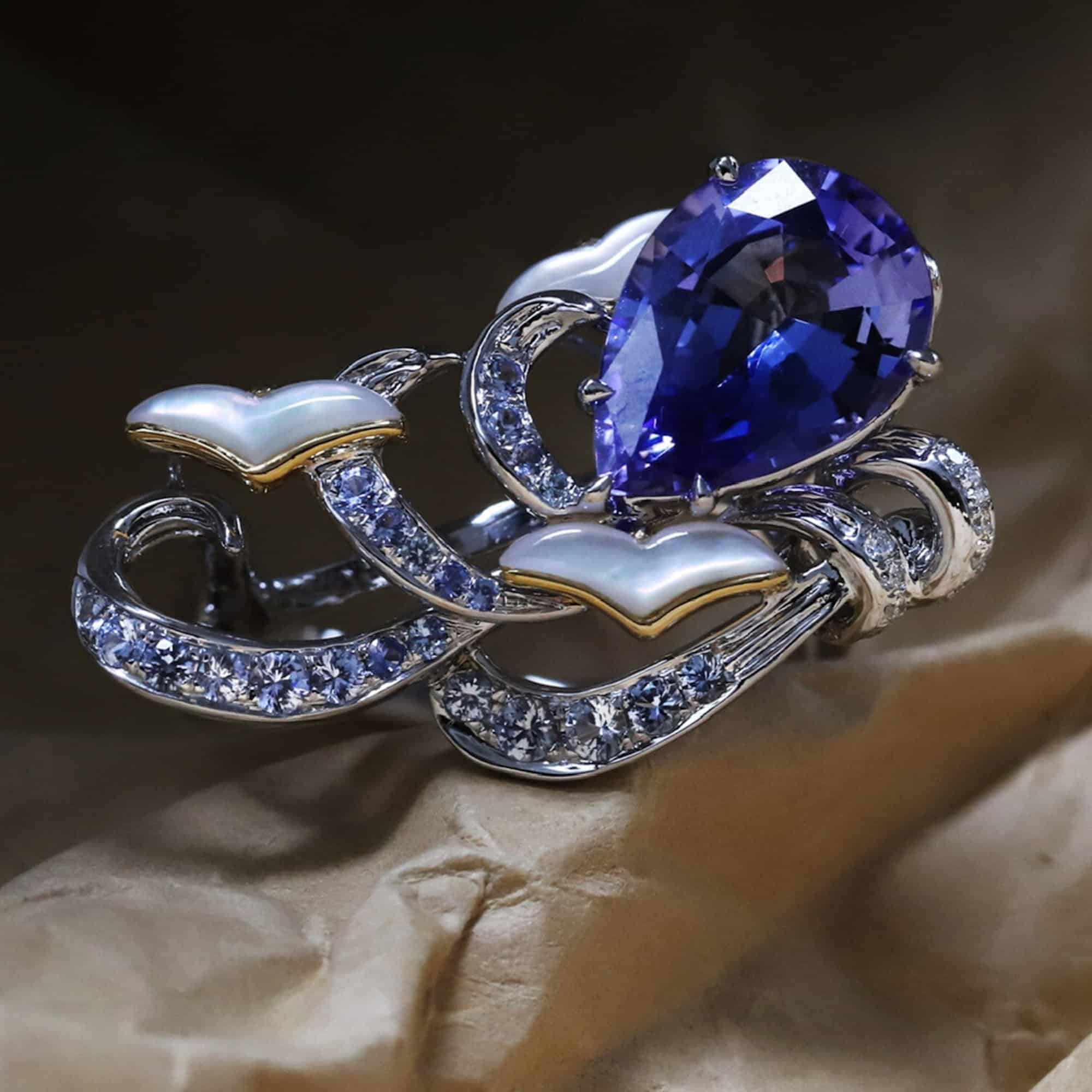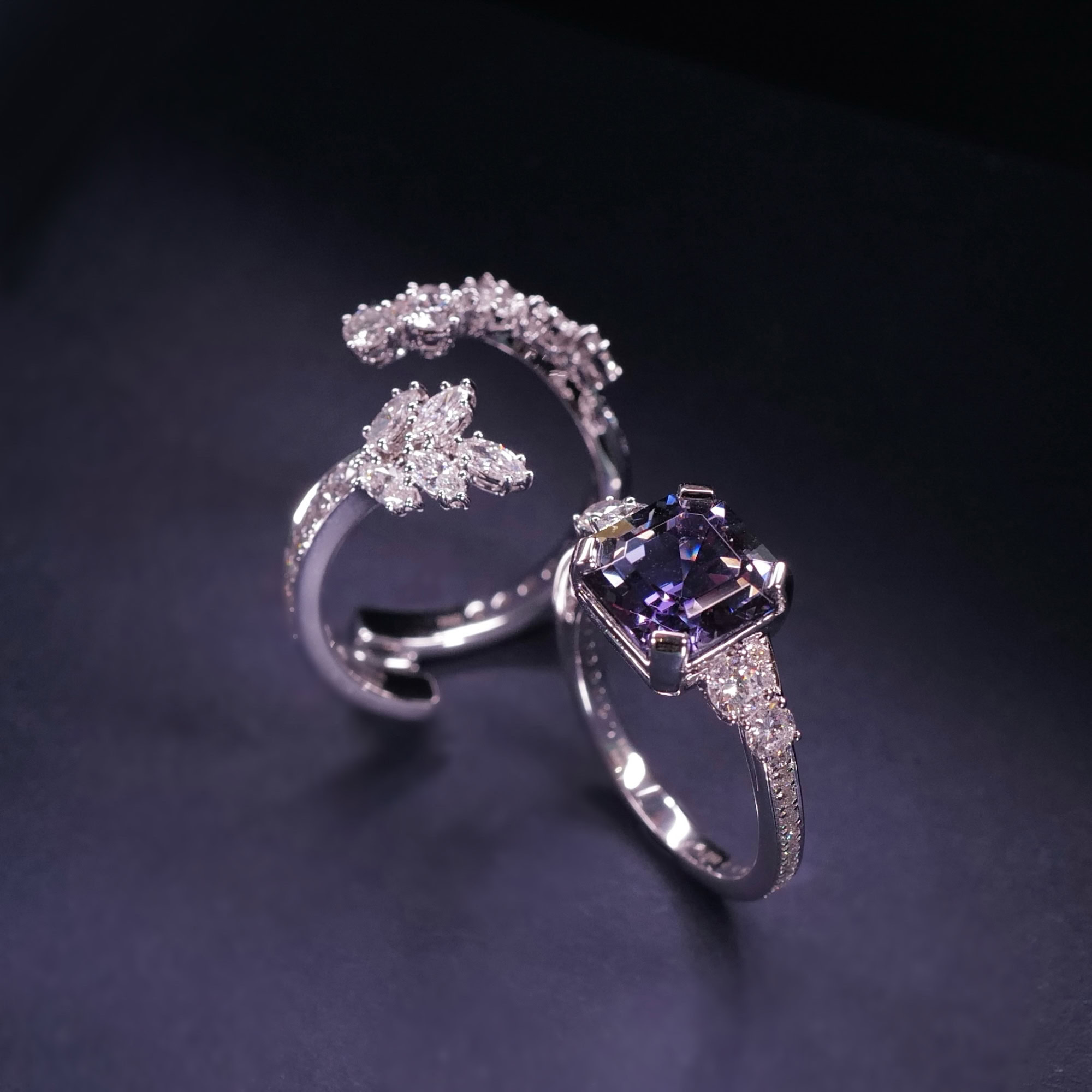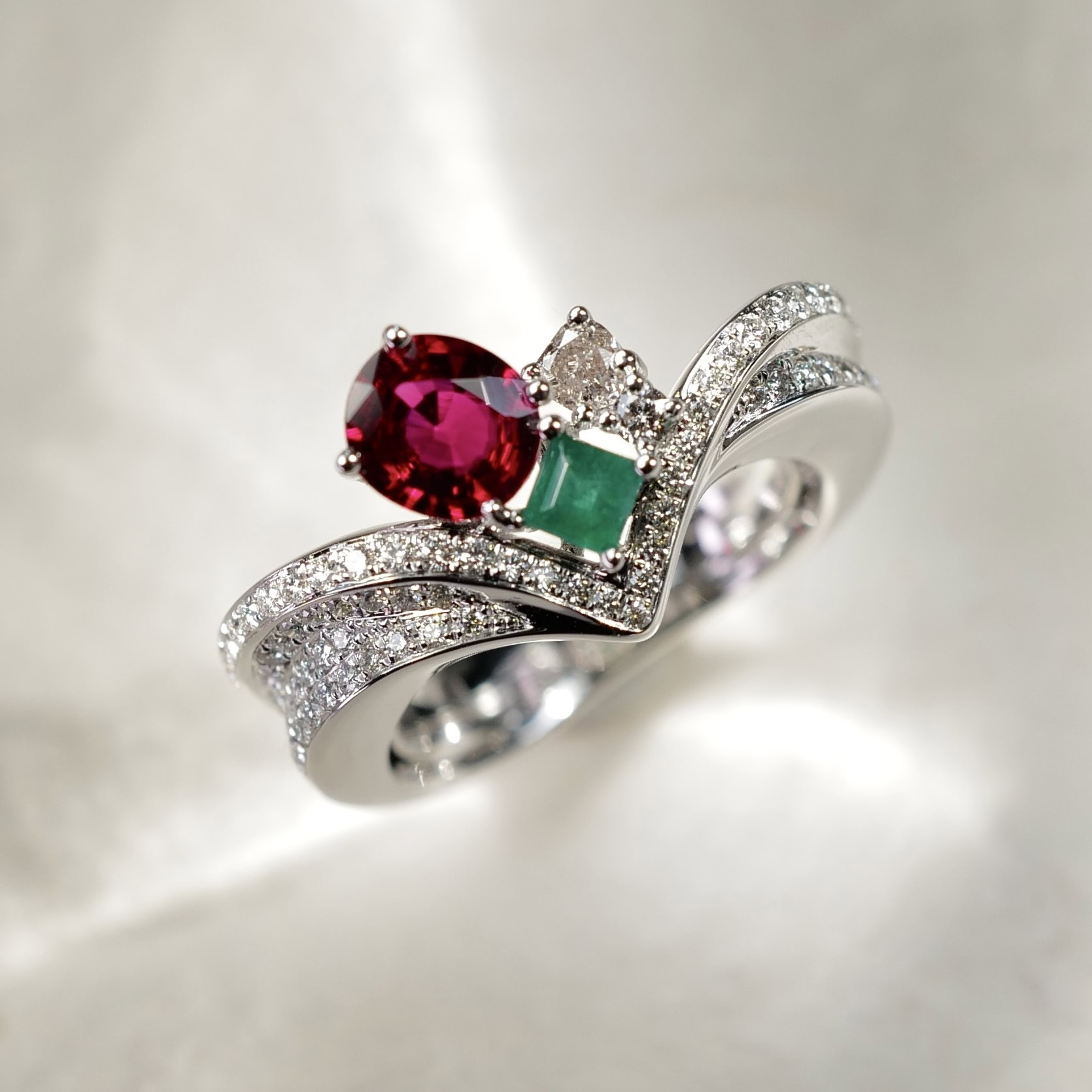Early in the day, deep mysterious blues evoke a magical spell, but as the light begins to fade from the skies, its subtle flashes of purple and violet bring upon a whole new myriad of emotions.
We’ll never be able to pin point the exact moment human eyes first met emeralds or rubies, but for the fascinating tanzanites, we do. Its unrivalled deep indigo hue might be the first thing that flashes our minds when thinking of this gem, but also its single-location source in the country after which it is named, Tanzania.

The rarity of this spectacular crystal cannot be understated – it’s found only in its home country and thought to be at least 1,000 times rarer than diamonds.
This exotic species gradates from deep purple to luminous violet and lush blue. Depending on their angle of view, they’ll reveal three different shades, a unique optical phenomenal known as pleochroism. Combine that with their high clarity levels and breathtaking shine, it’s no wonder they’re regarded as one of the most coveted gemstones in current times!
History and Discovery
The year is 1967. On a seemingly uneventful day, a Masai tribesman happened to stumble upon a cluster of highly transparent, intense violet-to-blue rocks. And it changed everything.

He proceeded to alert a man named, Manuel De Souza, a local fortune hunter, who immediately took a short expedition north of the country to investigate. Mid journey, though, his driver refused to take him any further than the village of Mtakuja. Unfazed by this setback, he pushed forward four more miles on foot, leading him to one of the biggest gemstone finds of the 20th century. The intensity of the sparkle was, reportedly, what initially caught his eye from the ground. And the rest is history.

After much investigation, it was discovered that the gemstone was, in fact, a previously undiscovered variety of the mineral Zoisite.

A couple of years later, Tiffany & Co., made a deal to become its main distributor. The director at the time, thought the word ‘Zoisite’ sounded too much like ‘suicide’, and so chose to name the gem after its country of origin. They were so sure of tanzanite’s potential and invested in a huge publicity campaign soon after to promote it.

Well, its success was simply astonishing, an overnight hit, and leading jewellery houses were convinced this was to be one of the great gemstones of all time.

A further attestation in 2002, for the first time since 1912, the Gemological Institute of America, decided to make a new inclusion to the official birthstone list, making tanzanites the election for the month of December!
More reason to celebrate this lovely gemstone, and create wonderful jewellery with it.





